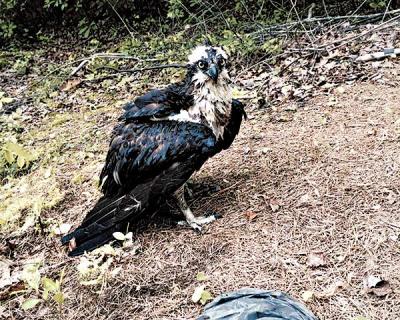Nature Notes: More or Less?

Well here we are well into summer and the birds have successfully fledged many of their young. Will they go for a second brood? Piping plovers are one of those species that tries and tries again if it fails the first time around. When you think about it, it’s not so surprising. Think of the chicken. Mother hen sits in a nesting box and lays egg after egg, but if you don’t remove them, she reaches her clutch size and then incubates them. Chicken egg ranchers would go broke if the freshly laid eggs weren’t picked up each day.
You could try the same experiment in nature. If you removed the baby blue eggs from the robin’s nest in the yew outside your door each day, Mrs. Robin would continue to lay new ones, but not as many as 300 like some championship hens have done in the past. You would have to hand feed her to keep her laying.
Some rodent species — field mice, white-footed mice, etc. — have as many as three litters a year. The smaller the mammal, the more fecund. Small herbivorous mammals are prey for larger carnivorous mammals and birds. Consequently they have to produce more and more infants to stay even in the population race.
It’s the same in the seas as it is on land. The female oyster spawns thousands of eggs, hoping several will survive to maturity. The young start out as swimming larvae and are taken by a variety of filter feeders and zooplankters that feed on other zooplankters. The parents never know who their offspring are; there is no parental care involved.
Some fish spread their seed to the winds. However, a few do exhibit parental care. Take the male stickleback, which hides the just-born larvae in its mouth when attacked, or the seahorse — the female produces the eggs, but stuffs them in the male’s marsupium for safe keeping.
If you try to come up with a novel strategy for a species’ survival, one generation to the next, you will find that just about every unique idea has already been tried. Such is the nature of evolution over millions and millions of years.
The fewer the offspring in a parent’s lifetime, the larger the parent, generally. The human is somewhere in the middle. Some families have as manyas 15 siblings, but the norm is less than 5. In third world countries where infant mortality rates can be high, birth rates are also higher.
Mammals and birds differ from almost all reptiles and amphibians in that they exhibit parental care, mammals generally for a much longer time than birds. The larger the mammal or bird, the longer it takes to grow to sexual maturity. Sparrows are ready to reproduce a year after fledging. It may take three or four years before eagles come of age. The young of some mice have grown to sexual maturity and are fertile before they reach a year old. Most bovines, horses, and on up, take several years to reach sexual maturity.
The larger the mammal, the longer the period of child raising and parental care as well. There is a weaning process exhibited in mammals and birds. When I dropped out of college twice and was about to be drafted into the Army in 1957, my mother took me to the nearest recruiting office here on Long Island and I enlisted. I had no idea that I was being weaned and that, more important, it was to my advantage.
Some very well-protected or very well-hidden vertebrates have few offspring — the box turtle, which has almost no predators, save automobiles, lays less than 10 eggs in a clutch. The opposite is also true. Our red-backed salamander has a gray back on the South Fork and is soft and squishy. It lays as few as four eggs in a clutch. Its microhabitat, in and under rotting tree boles, may offer an explanation. Then there are those fabulous pelagic seabirds, the storm petrels, for example, that come to land to lay and hatch a single egg each year. Despite the very low reproductive rate, they seem to be holding their own.
The question often asked is, is it better to have fewer? Are the odds in favor of the only child making it big compared to any one of five or six siblings? I have yet to see the results of the research on that subject, but we all know about the Roosevelts and the Bachs. Sometimes more is better; sometimes less is best.
Larry Penny can be reached via email at [email protected].
